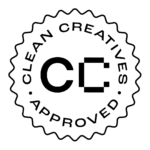Is your marketing haphazard or ad-hoc? Do you find yourself reacting to events rather than having a proactive plan that’s designed to help you achieve your business goals? In this blog, we share why structure is so important to help you create a route map to success and maintain consistency.
The importance of a marketing calendar
After you;ve designed your overarching marketing strategy, your calendar is a document that helps you map out all your campaigns across the year. It helps you:
• Avoid being sporadic and haphazard
• Stay steady and consistent
• Have a plan that fits around your schedule
• Stick to your budget
• Plan activity and spend around peak buying cycles
• Allocate responsibility and plan resource requirements
• Keep your staff on the ball
The are many benefits of effective marketing calendars:
• They help you plan your budget effectively
• They help you plan resources, so you can work without rushing or
missing opportunities
• They give you a roadmap towards meeting your objectives.
The Key Elements of a Well-Devised Calendar
An effective marketing calendar requires careful thought and consideration. Though it will differ from organisation to organisation, the key elements include:
• Market trends such as peak and low buying times
• Key business dates such as financial quarters
• Events and exhibition dates
• Deadlines: Internal review, sign off, submission
• Team annual leave and supplier availability
• Dependencies: for example, collateral cannot be created until copy is written
• Responsibilities: for every stage from research and production to final sign off
• Regular allocated times for campaign reviews and analysis
• Key dates for board review preparation
• Key dates for annual or biannual strategy creation
Make Consistency Easy
Branding is your business’ identity and failure to ensure consistency across every piece of customer or internal communications weakens your image.
Most of us will have been in a scenario like this:
Julie: “I’ve created my own PowerPoint presentation with clip art, it
looks great!”
Sorry, but it doesn’t, Julie…
Situations like these are why you need to create consistency across all your assets. That means making sure you have written brand guidelines that cover exactly how your brand identity should and should not be used.
Brand guidelines help:
Your design team should create a bank of assets to help every department in the business stay on brand. These can include:
• Beautifully designed documents
• Presentations
• Newsletters
• Company stationery
• Company signage
• Logos and banners
They should create templates for every document and piece of merchandise so staff like Julie don’t get carried away with off-brand clip art!
Creating Tone of Voice Guidelines
Developing and maintaining a consistent tone of voice can be a difficult challenge, particularly when writing copy for a broad range of digital and print communications, from internal documents to customer-facing literature.
That’s where tone of voice guidelines come into play. Let’s use an extreme example here.
You’re a highly-professional, corporate business. How would your customers react if you started your next email campaign with:
“Alright mate, we’ve got this new product that’s off the hook!”
They might think you’ve lost the plot – it’s confusing and does no favours for your credibility.
Everyone in your organisation will communicate differently and they shouldn’t be restricted or constrained. However, there should be set standards to follow and you should know from your audience research how you want to be seen as a company and how customers want to be spoken to.
Creating guidelines for tone of voice and messaging makes it easier for everyone to communicate whilst keeping your brand in tip-top condition. That also goes for defining how people should describe your business, products and services. Creating consistency across all business units will ensure a cohesive approach to marketing.


